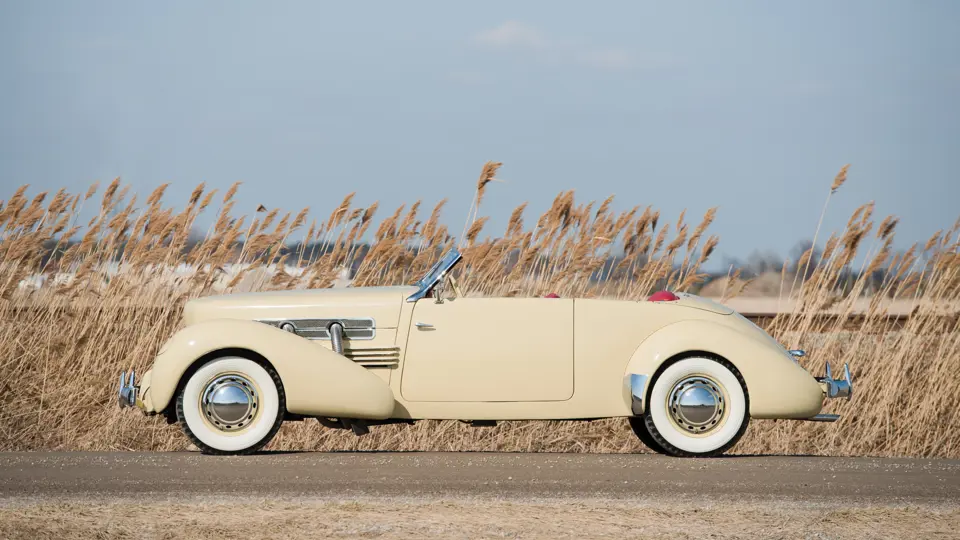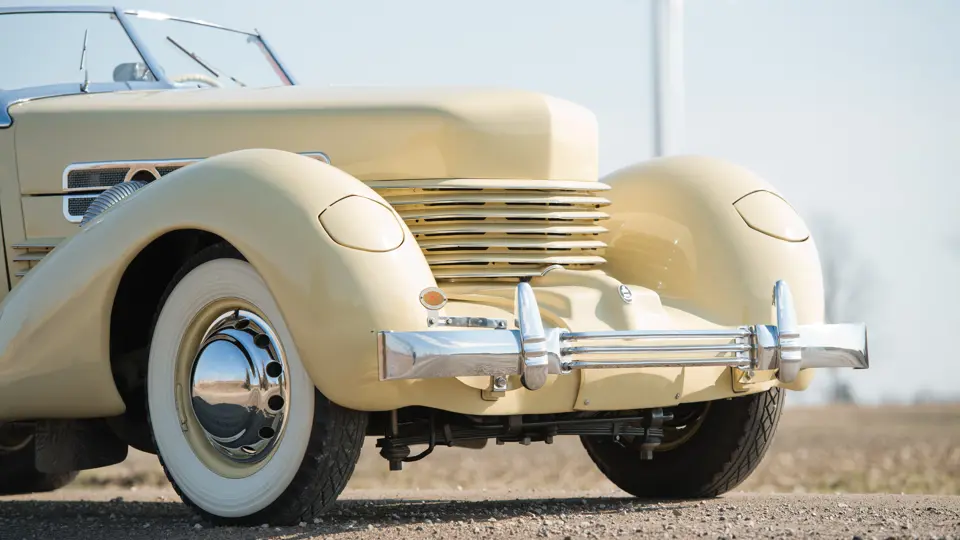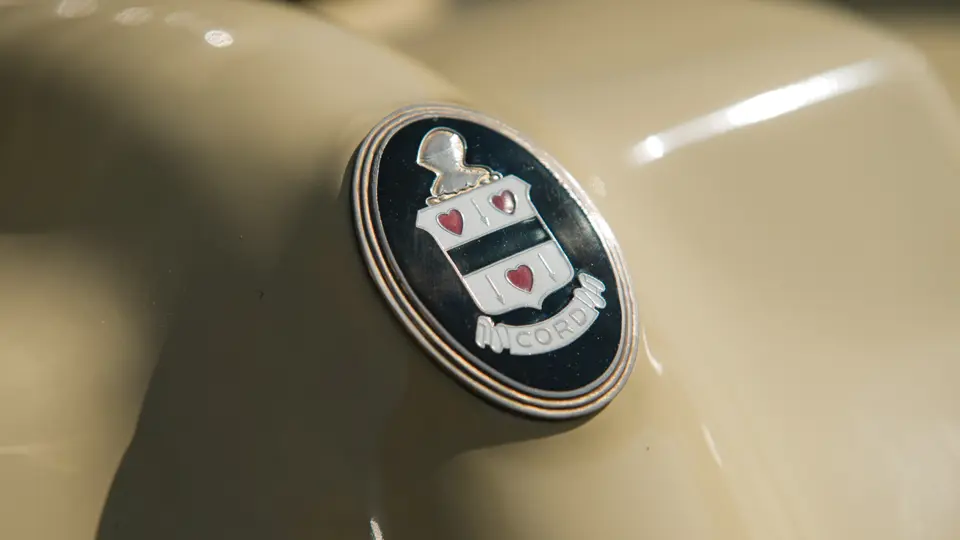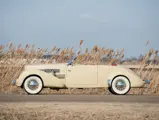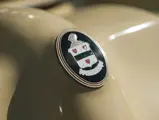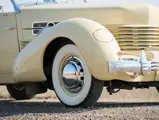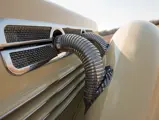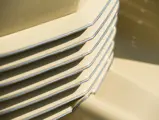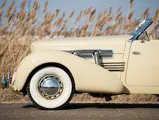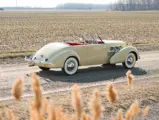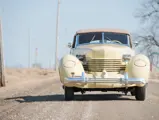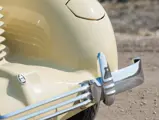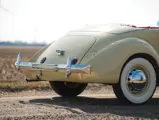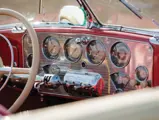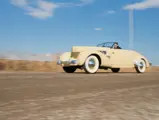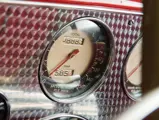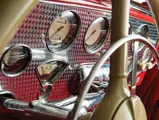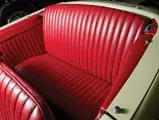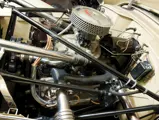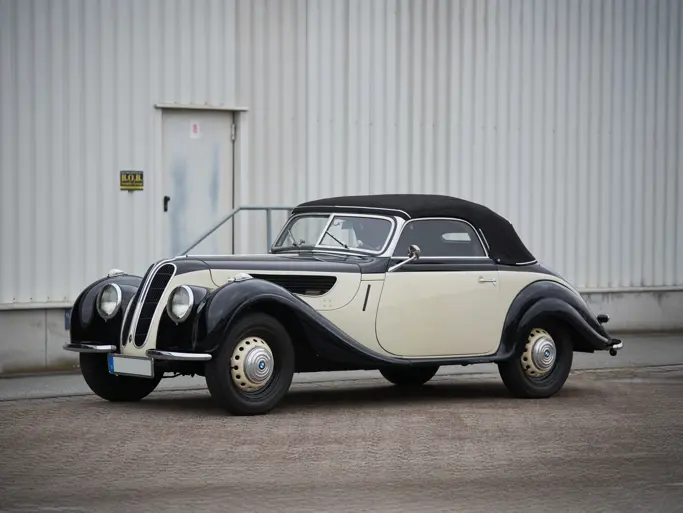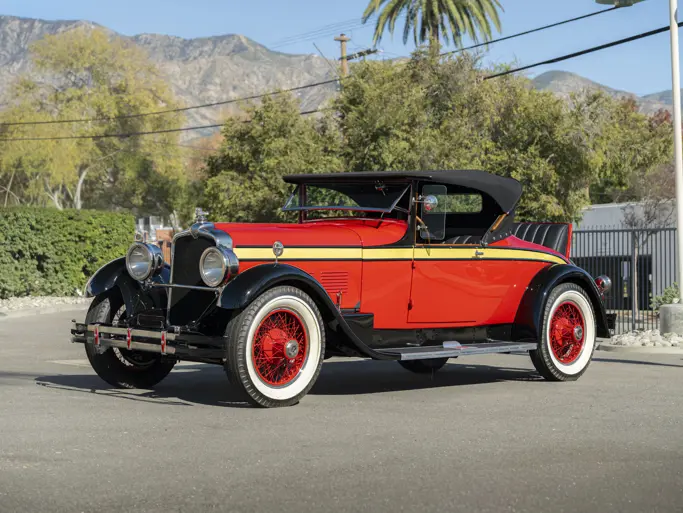170 bhp, 288 cu. in. supercharged L-head V-8 engine, four-speed pre-selector manual transmission, independent front suspension, rear semi-elliptic suspension with leaf springs, and four-wheel hydraulic brakes. Wheelbase: 125 in.
The Duesenberg Model J became available with a supercharger in 1932. Three years later, the eight-cylinder Auburn could also be had with a blower. All that was left was to fit the engine to the new Cord of 1936, and a year later, as the 810 evolved into the 812 and production was fully underway, Auburn Automobile Company’s most flamboyant line received supercharged power as a popular $415 option on all models.
Lycoming began with the 810’s stock V-8 engine, revising the design with a modified firing order, lowered compression ratio, more extreme cam grind, and a unique, larger Stromberg AA-25 carburetor. The engine exhaled through a functional four-pipe chrome side exhaust, which was an identifying mark of all supercharged Auburn, Cord, and Duesenberg products and was believed to have been added to the Cord by stylist Alex Tremulis, later of Tucker fame, and engineered into being by none other than August Duesenberg.
The supercharged Cord had a factory-quoted power output of 170 horsepower, although Lycoming employees later recounted numbers as high as 195. The factory sent two properly equipped Beverly sedans to the Indianapolis Motor Speedway, where, driven by Ab Jenkins and Billy Winn, they recorded the highest average speed over a 24-year period at the Brickyard, over 80 mph, and captured the famous Stevens Trophy. That record would stand until 1954.
The four-passenger Phaeton presented here was originally equipped with supercharged engine FC 2133, which is identified as an original blown unit by its “FC” prefix. This is confirmed by the original firewall tag, which is still installed on the car. According to Cord historian Ron Irwin, the original engine has since been replaced with another supercharged engine, FC 2500, which has been re-stamped with the original engine’s number. It is certified with this change as a Category One car, C-193, by the Auburn Cord Duesenberg Club.
The car’s history has been traced back as early as 1955, when an original registration, included in the file, places it in the care of Mrs. Samuel T. Pruit, of Honolulu, Hawaii. It has since enjoyed many years of ownership by Midwestern enthusiasts, including well-known Cord guru J.K. Howell. Henry Noffke acquired the car around 1980 and spent the next decade restoring it to original condition.
This Cord, finished in the classic and factory-correct color combination of Cigarette Cream over red leather upholstery, debuted at the ACD Club’s National Reunion in 1991 and was an award winner there the following year. The restoration has been well maintained since, for many years in the ownership of collector Willard Brunkow and most recently in the care of the current owner.
The car is accompanied by a collection of documentation, including the aforementioned Hawaiian registration, a small photo album of the restoration, and comprehensive files of restoration documentation, which include receipts, parts lists, and correspondence between Mr. Noffke and enthusiasts. Also included with the car are reprints of the owner’s manual, factory service bulletins, a service handbook, and the “Cord Approved Accessories” for 1937, as well as the ACD certification paperwork.
This well-documented Cord, which is known to enthusiasts, is ready for a new caretaker who appreciates its timeless style and power.

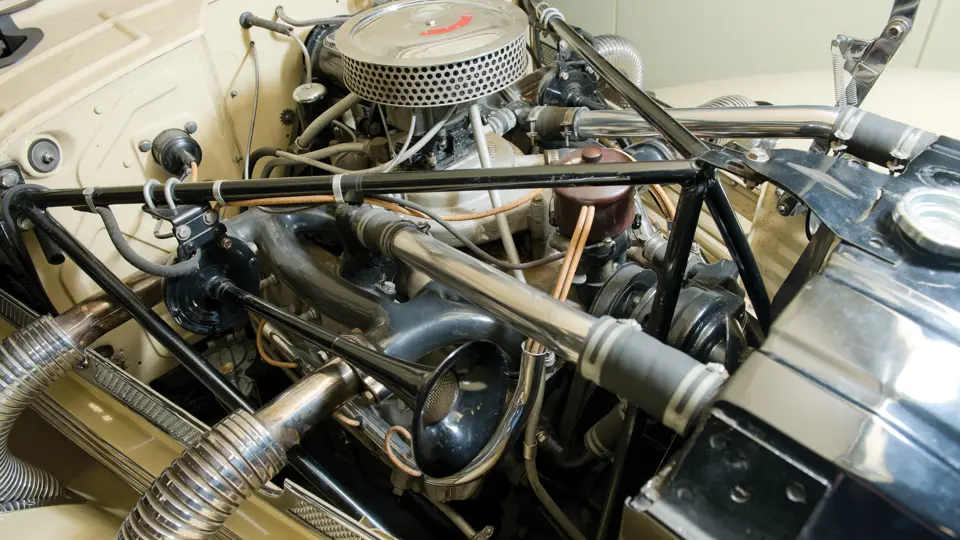


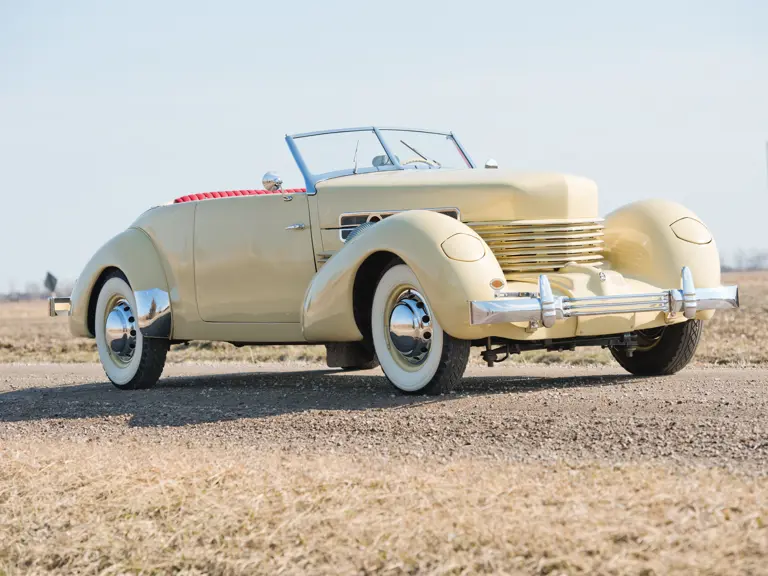
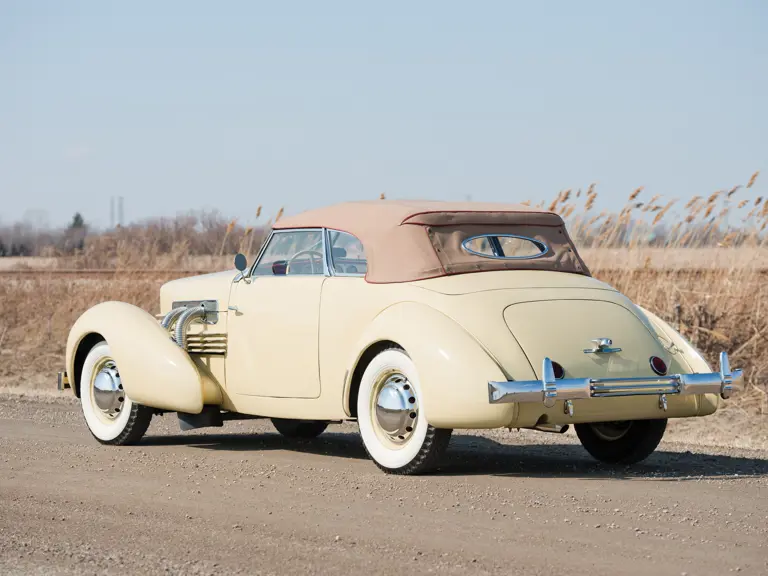
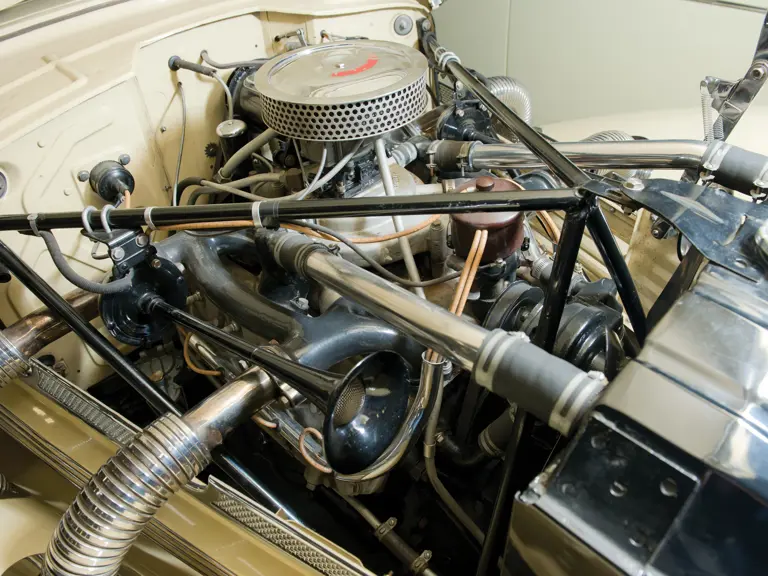

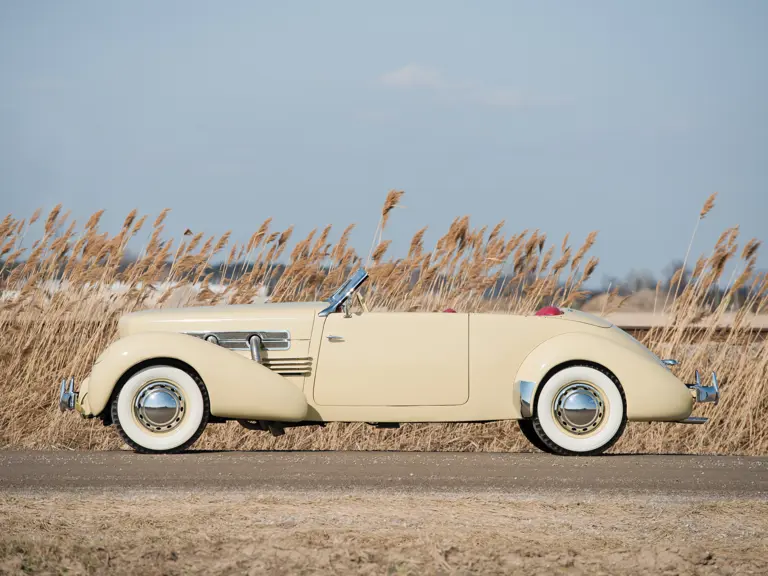
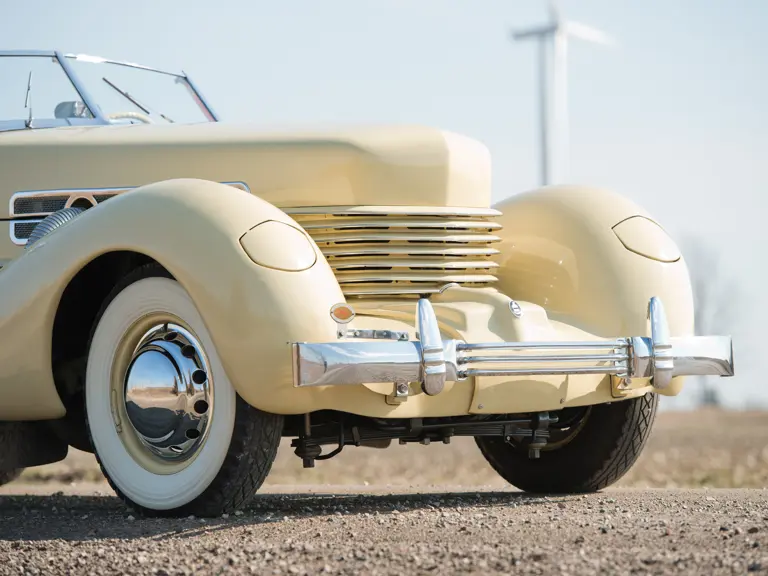
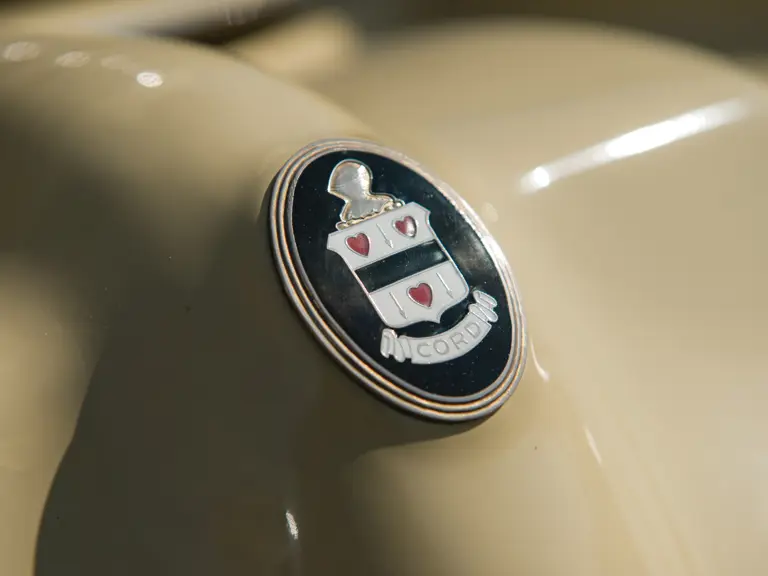
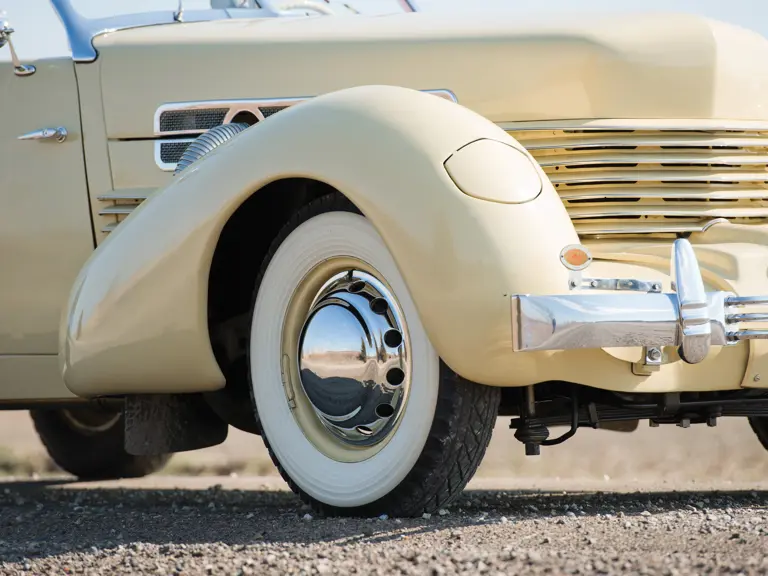
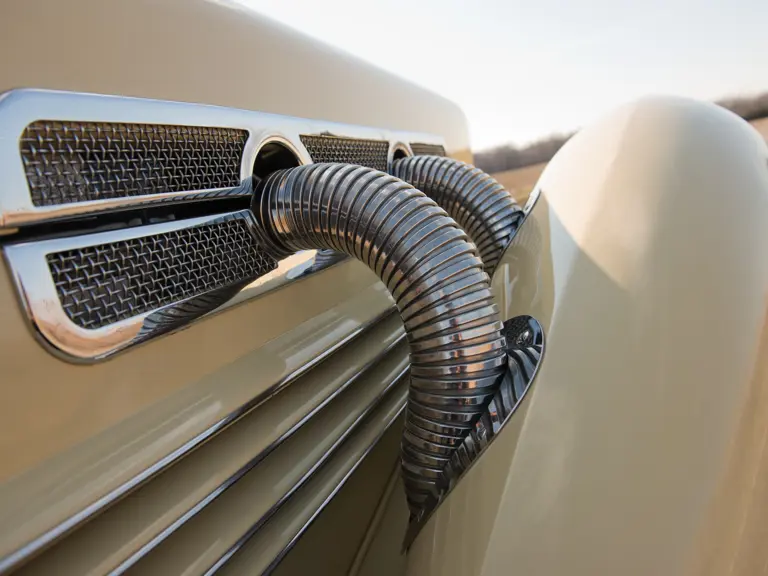

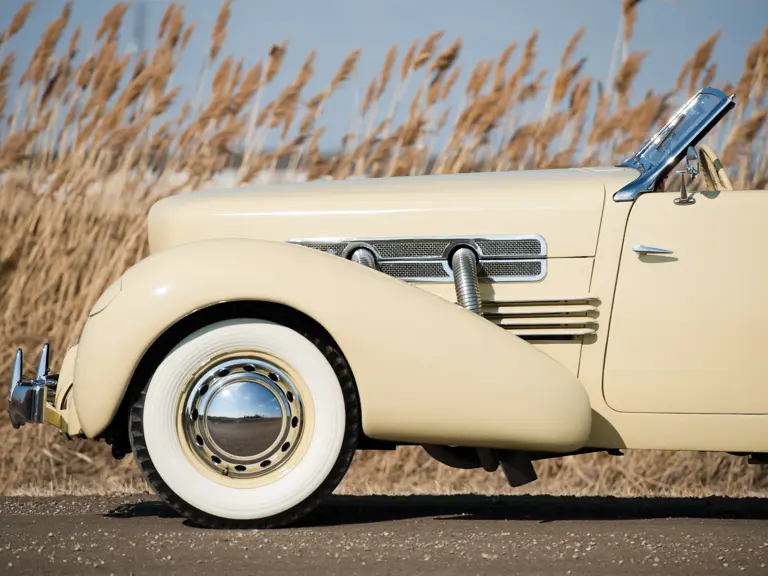
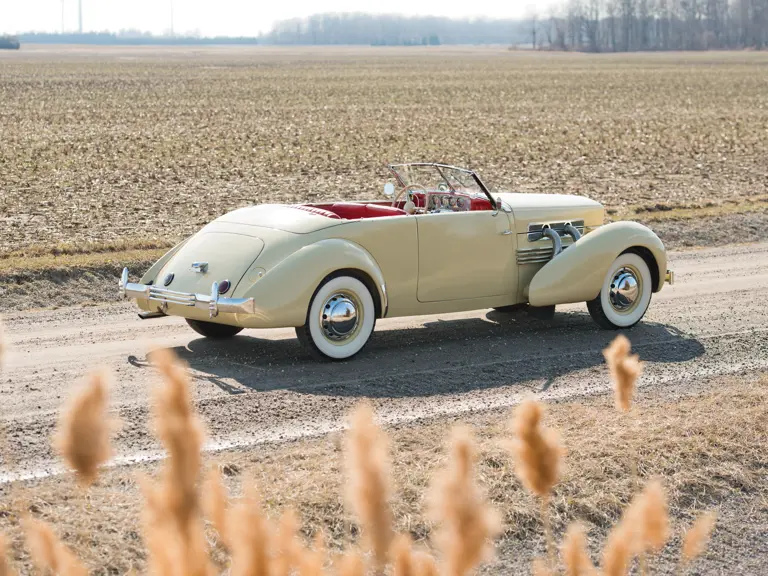
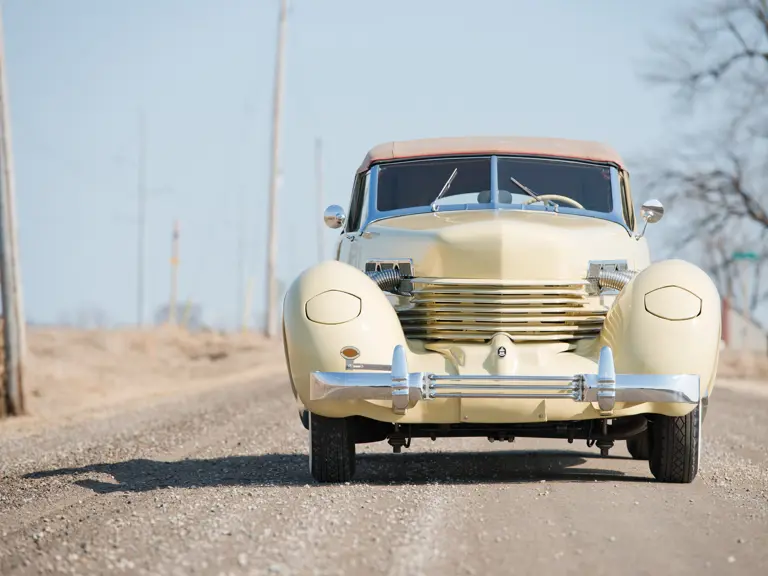

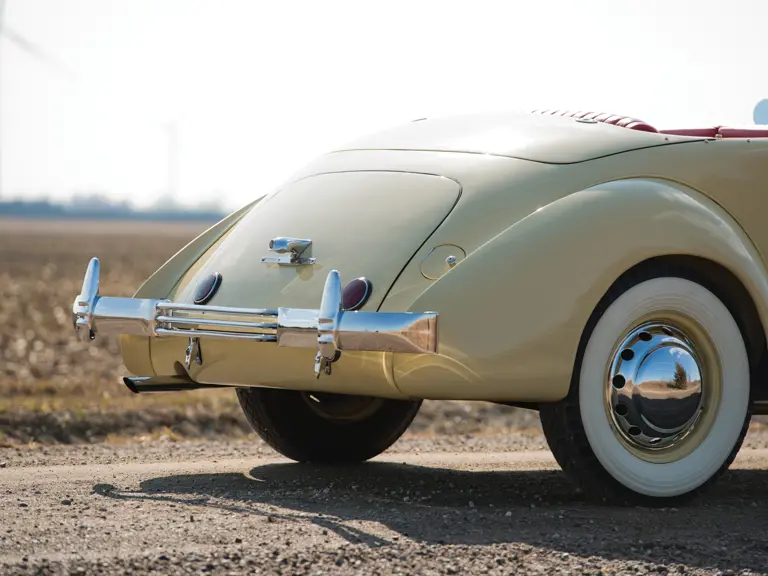
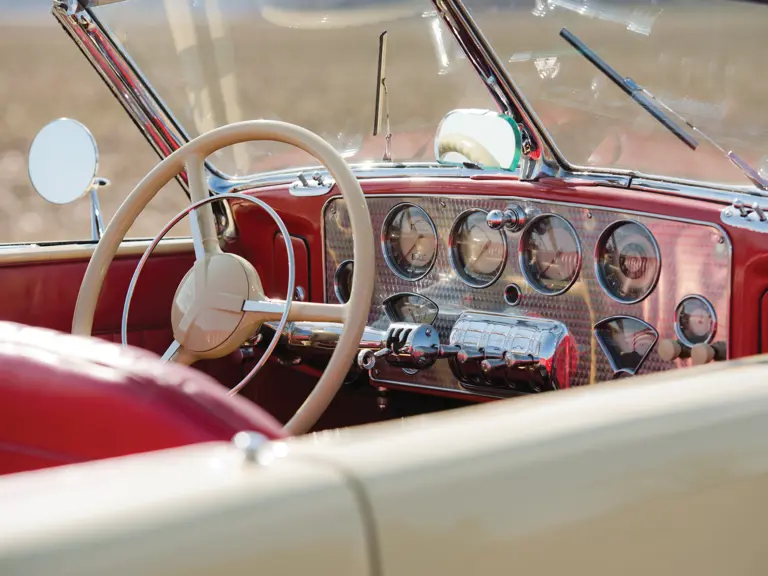
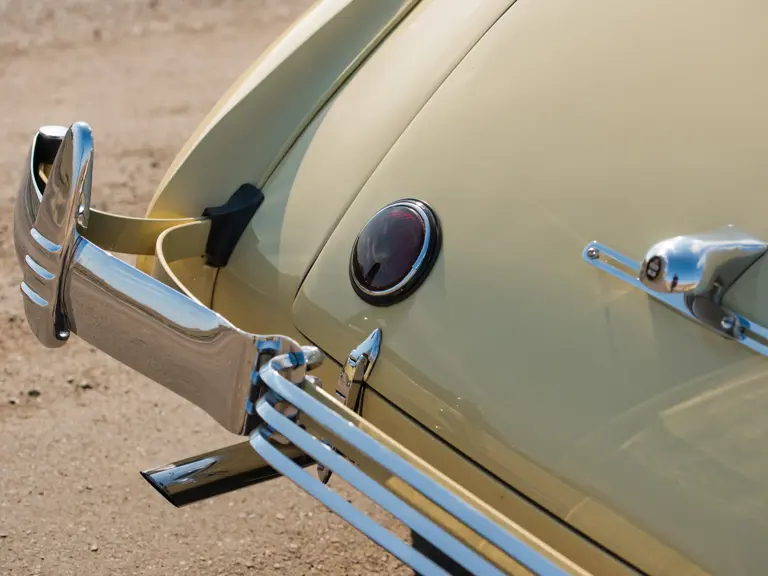
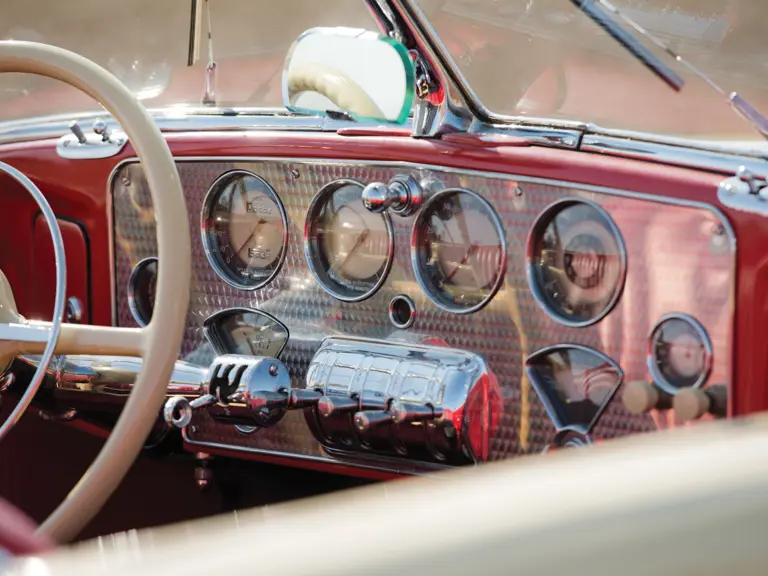
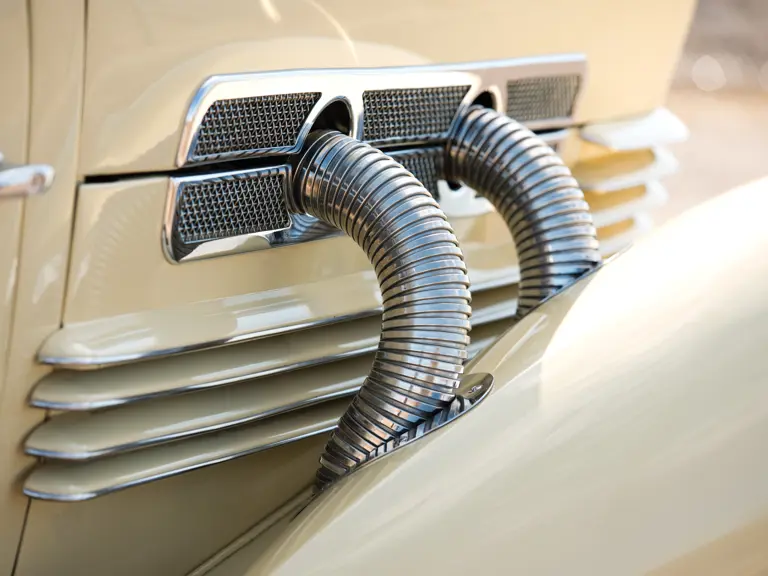
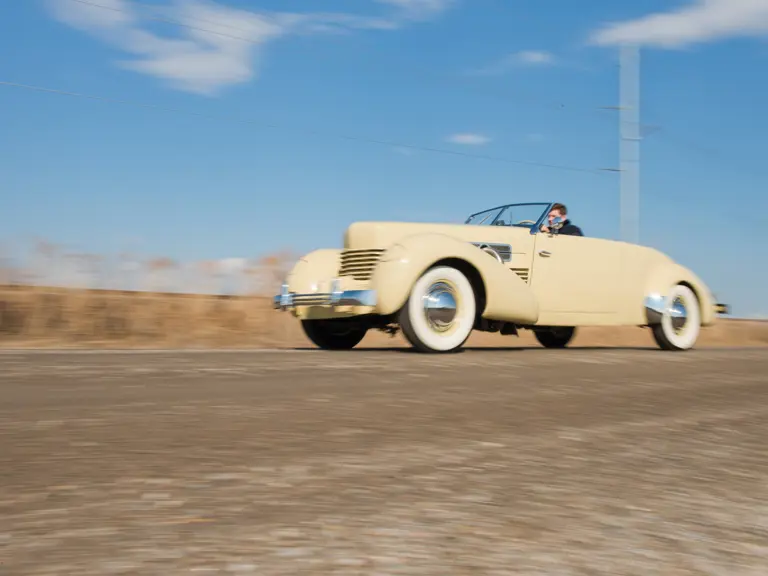
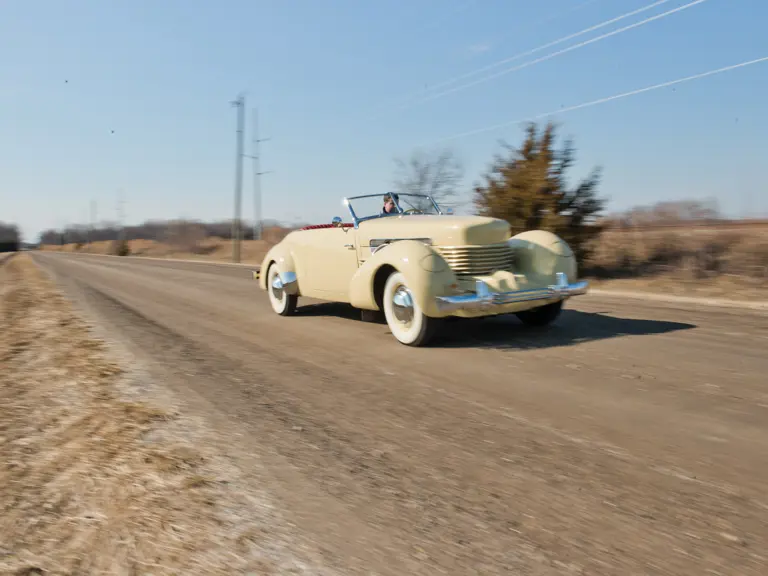
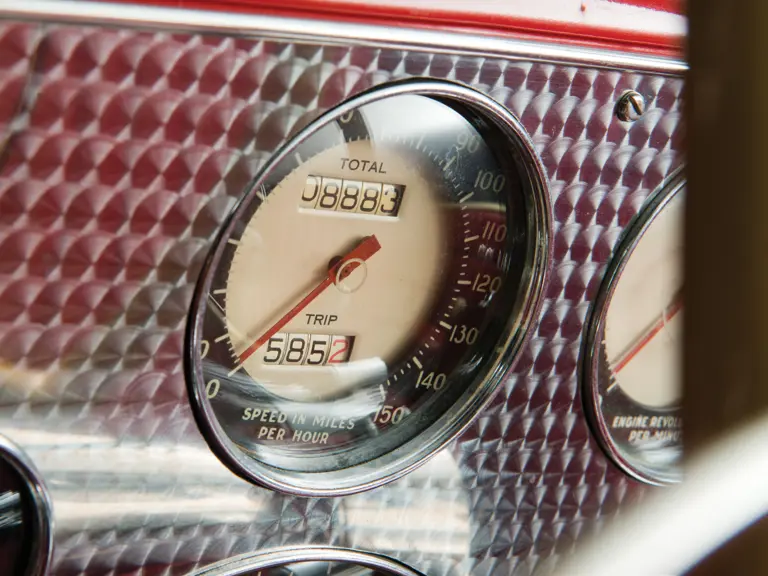
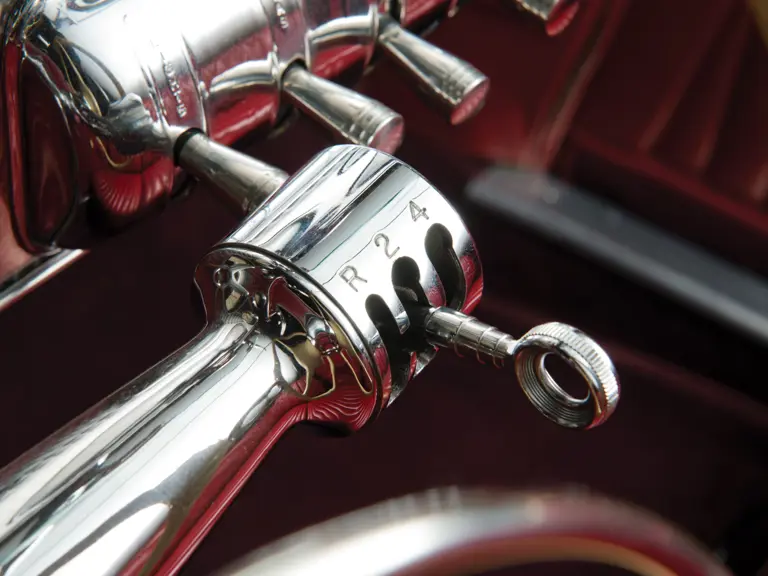
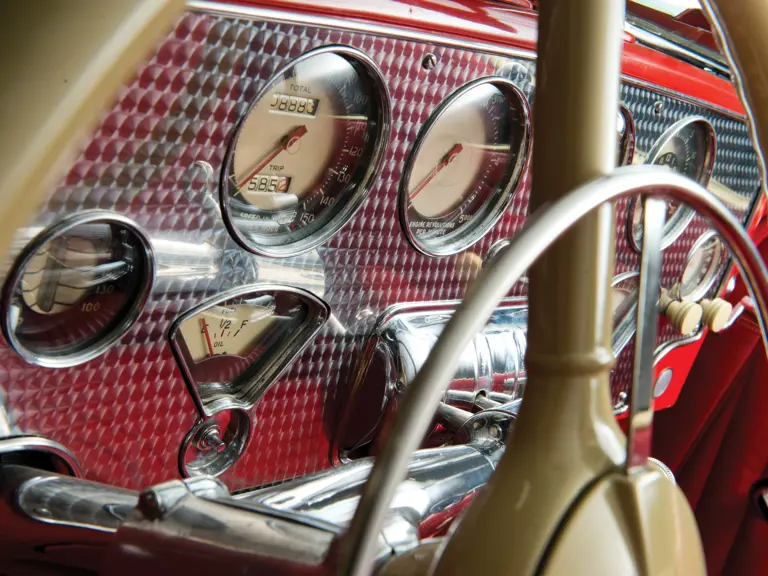
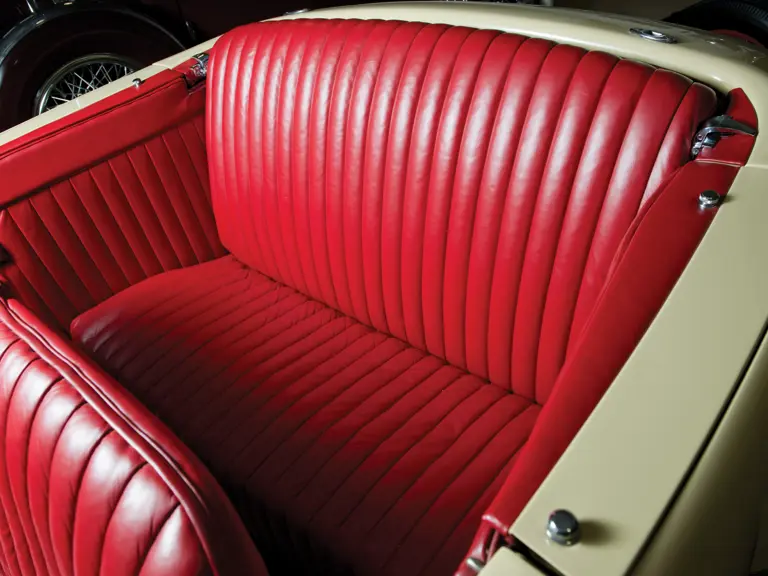

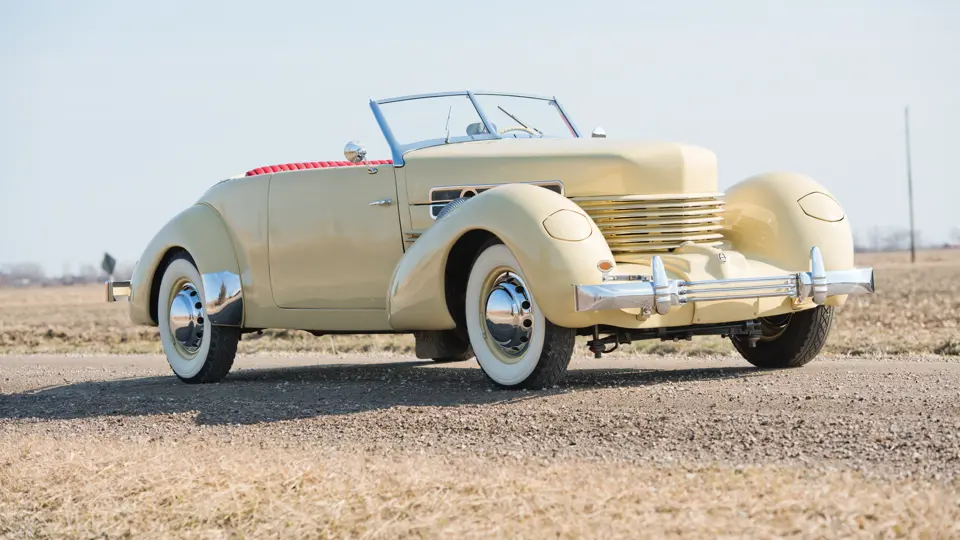
 | Plymouth, Michigan
| Plymouth, Michigan
